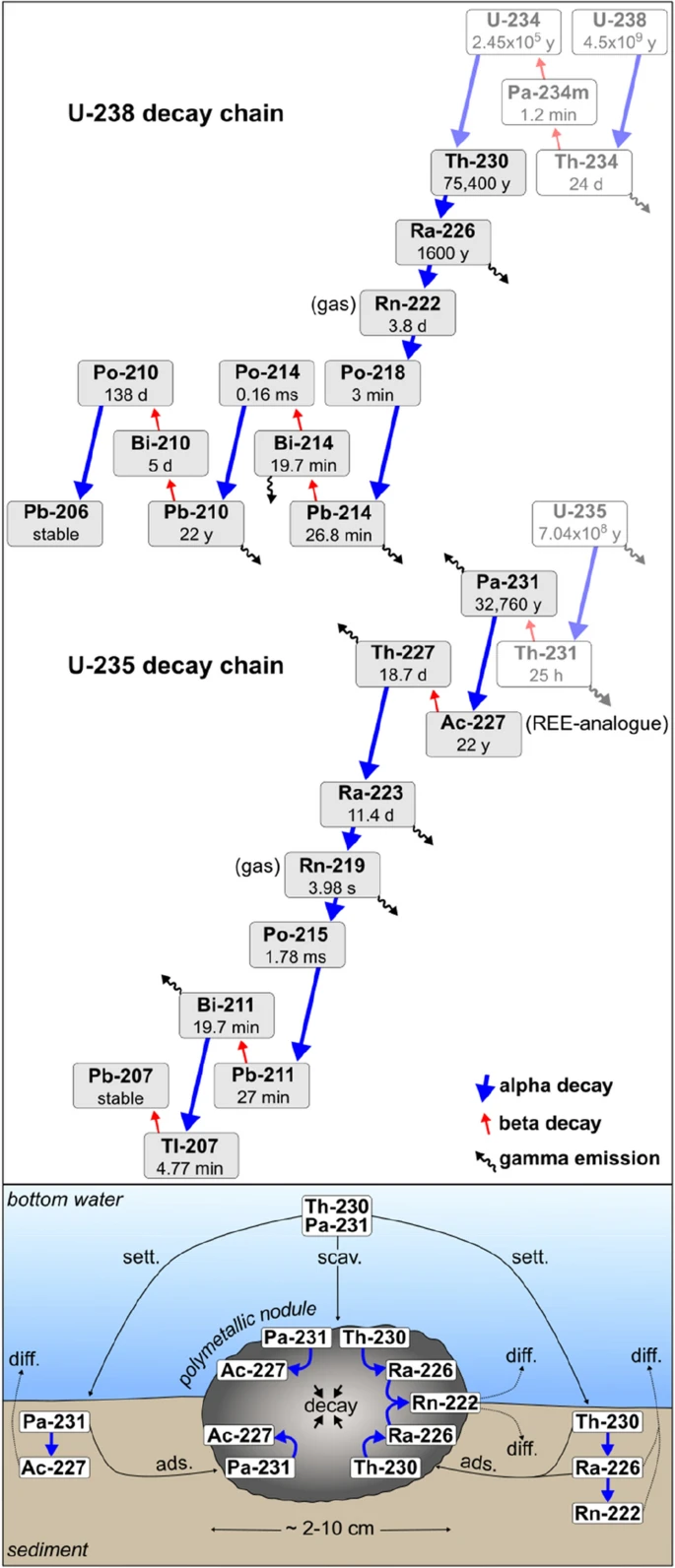Phys.org May 17, 2023
In search for critical elements, polymetallic nodules at the deep abyssal seafloor are targeted for mining operations. Nodules efficiently scavenge and retain several naturally occurring uranium-series radioisotopes, which predominantly emit alpha radiation during decay. Researchers in Germany have presented new data on the activity concentrations of thorium-230, radium-226, and protactinium-231, as well as on the release of radon-222 in and from nodules from the NE Pacific Ocean. They demonstrated that the activity concentrations for several alpha emitters were often higher than at the surface of the nodules. The observed values could exceed current exemption levels by up to a factor of 1000, and even entire nodules commonly exceeded these limits. Exemption levels were in place for naturally occurring radioactive materials such as ores and slags, to protect the public and to ensure occupational health and radiation safety. In this context, they discussed three ways of radiation exposure from nodules, including the inhalation or ingestion of nodule fines, the inhalation of radon gas in enclosed spaces and the potential concentration of some radioisotopes during nodule processing. Seen in this light, inappropriate handling of polymetallic nodules poses serious health risks… read more. Open Access TECHNICAL ARTICLE

Visualization of the U-238 and U-235 decay chains and the scavenging… Credit: Scientific Reports volume 13, Article number: 7985 (2023)